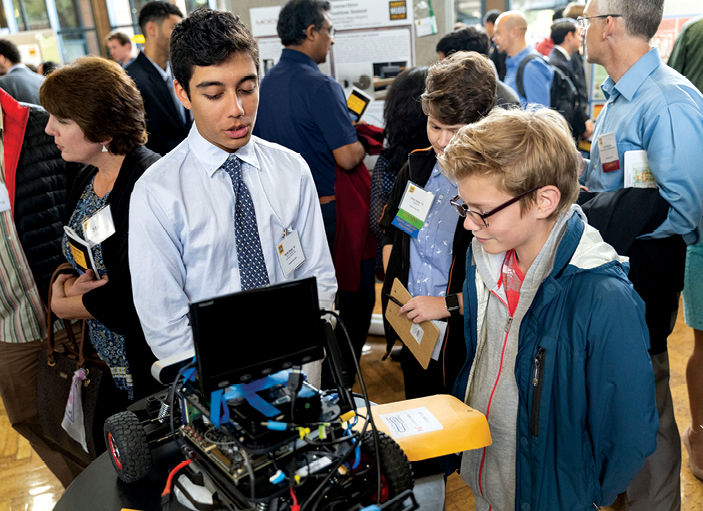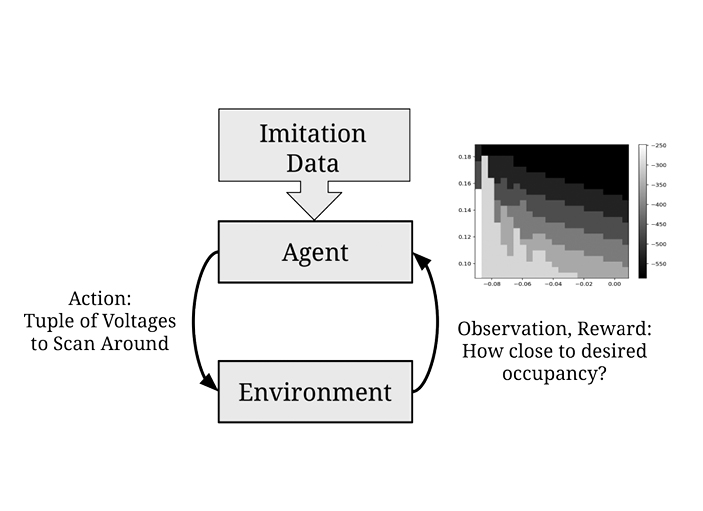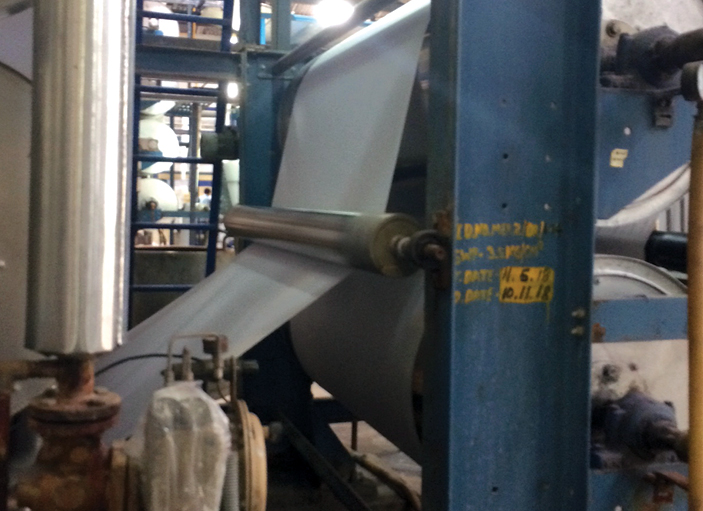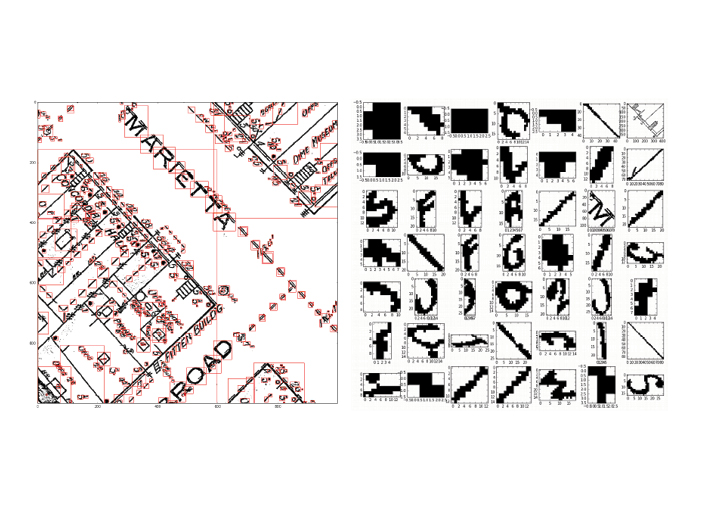Clinic Program
Industry Solutions
More than 250 students tackled 55 projects during the 56th year of the Clinic Program. Thanks to companies like Lawrence Livermore National Laboratory and Sandia National Laboratories, who received Milestone Awards for the 30 projects each have sponsored, students had a diverse range of problems to solve. Here we share the details of several of the projects, many of them interdisciplinary, presented during Projects Day, May 7.
Find more project descriptions at Clinic.
1. Computer Science Clinic: RACECAR for Education

MIT Lincoln Laboratory liaison: Andrew Fishberg ’16
Advisor: Zachary Dodds
Students: Parth Desai PZ ’19, Chloe Elliott SCR ’19, Alasdair Johnson PZ ’19, Anthony Seto ’19, Reagan Smith ’19
In collaboration with Beaver Works outreach program, MIT Lincoln Laboratory developed an autonomous RC car with powerful sensors and processing. Using two RACECAR robots, the Clinic team researched and developed a curriculum in which students implement a variety of robot navigation algorithms. HMC first-year students used these cars to test and refine the materials, resulting in a curriculum that will make the RACECAR platform more accessible. MIT hired the students to continue work on the curriculum during the summer.
2. Computer Science/Physics Clinic: Machine Learning and Quantum Dots

HRL Laboratories LLC liaisons: Seán Meenehan ’08, Emily Pritchett
Advisor: Peter Saeta
Students: Corbin Bethurem CMC ’19, Evan Hubinger ’19, John Jeang ’19, Vivian Phun ’19
In order to use electrostatically defined quantum dots to build qubits for quantum computers, HRL Laboratories seeks a three-dot system with a configuration of one electron per dot. Since this process of tuning up the dots manually is laborintensive, the team sought to automate the process via a machine learning technique, namely deep reinforcement learning.
3. Engineering/Mathematics Clinic: Stretch Wrapper

Niagara Bottling LLC liaison: Parker LaMascus
Advisor: Timothy Tsai
Students: Stephanie Blankley ’20, Bohan Gao ’19, Tai Le POM ’19, Adrian Sanchez Arias ’19, Dana ShangGuan ’20, Elijah Whitsett ’19 The team developed an algorithm that autonomously optimizes stretch wrapper material usage under quality constraints. The algorithm, compatible with Niagara’s main data and control hub, does this by safely experimenting with different machine parameters and finds recipes that either meet or surpass the goal of 20 percent material usage reduction.
4. Gobal Clinic: Textile Drying

Arvind Ltd. liaisons: Harvinder Rathee, Dhruvin Savalia
Advisors: Sunil Kale (Ahmedabad University), Erik Spjut
Students: Nisha Maheshwari ’19, Alex Ravnik ’19, Sitoë Thiam ’19; AU Team: Varshil Dalal ’19, Anuj Pandya ’19, Het Patel ’19
Arvind Ltd. is an Indian textile manufacturing company with $1 billion revenue seeking to increase the energy efficiency of its textile drying process. The team modeled and prototyped novel, low-energy ways to dry fabric at an industrial level and recommended changes to the current process that will help Arvind recover 10 percent of the energy usually lost during drying.
5. Mathematics Clinic: Historical Imagery Project

EDR liaisons: Zachary Fisk, Paul R. Schiffer, Richard White
Advisor: Nicholas Pippenger
Students: Nathaniel Diamant ’19, Mackenzie Kong-Sivert ’19, Jacky Lee ’19, Vivaswat Ojha ’19, Kinjal Shah ’19
Team members developed systems to search and categorize vast collections of historical raster imagery and extract key information. The complex problems relate to search, statistical analysis, image analysis and mapping. EDR believes that a focused mathematical and computer science approach provides both a challenging problem for students and a potentially valuable product for EDR, ultimately helping to improve environmental due diligence across the United States.